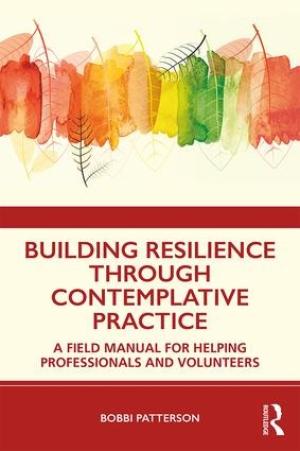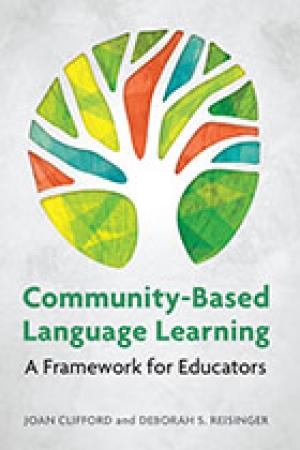Resources

This Special Topic section of the journal includes an essay by John Van Maaren, “Transformative Concepts and Troublesome Knowledge,” followed by three companion essays by Richard S. Ascough, Tat-siong Benny Liew, and Jocelyn McWhirter, each of which describes a particular teaching strategy the author uses to address a key threshold concept in biblical studies courses.

Threshold concepts (TCs) are conceptual gateways that students must pass through in order for learning to progress, but which are often navigated with considerable difficulty. They are therefore both transformative and troublesome for student learning. While individual TCs have been identified in related disciplines, no study has addressed TCs for ways of thinking and practicing in biblical studies. After introducing the TC framework, this essay takes a first step toward developing a TC framework for biblical studies by proposing a set of TCs for the discipline. In conclusion, this essay provides guidelines, with practical examples, for integrating TCs into the biblical studies classroom. Also published in this issue of the journal, see three short essays by Richard S. Ascough, Tat-siong Benny Liew, and Jocelyn McWhirter, each describing a particular teaching strategy they use to address a key threshold concept in their biblical studies courses.

The launch of the new online open access Wabash Center Journal on Teaching provides the occasion to reflect on the legacy of Teaching Theology & Religion, which our editorial team has been publishing through Wiley for 22 years ago. The editors had a conversation with Maryellen Weimer, who has known the journal well through her work on The Teaching Professor (a newsletter published by Magma that provides summaries of articles that appear in disciplinary-focused journals on teaching). Our conversation focuses on how TTR has fit within the broad range of genres and journals that constitute the scholarship of teaching, the value of articles that describe practical teaching techniques (such as our signature Teaching Tactics which will continue in the new journal), opportunities for making research on learning available to busy faculty, and the challenges authors face when contributing to this literature.

Theological education is currently undergoing significant changes. These changes are rooted in broader trends within the changing landscape of North American religion and higher education. This article surveys these larger shifts and explores their impact on the Associaton of Theological Schools (ATS), particularly in the changing financial/organizational model of schools, in the educational models and practices, and in the changing demographics of ATS student bodies. These trends point to significant themes that will characterize teaching and learning strategies for the future.

This article argues that critical thinking and theology belong together. Noting the need for such a combination in the breakdown of conversation between seminary students, the article justifies such a move in a theological anthropology. The author then describes several years of revisions to a Theology 1 course as he attempted to bring together the two goals of teaching theology and teaching critical thinking. The result was a syllabus that demonstrated two central transformations. The first is a “flip” of the classroom, or using the class time entirely for active learning. The second change is the creation of an assignment that walks students from theological conviction to theological argument. The author gives anecdotal and evaluative (grades, student evaluations) evidence to demonstrate the success of these revisions.

We survey the current landscape of teaching religion to undergraduates to imagine its contours over the next five to ten years. We follow Dee Fink’s outline of backwards design for course development to consider outside factors, the nature of the subject matter, the characteristics of learners and teachers, and issues related to particular courses, focusing on introductory and general education courses. Such courses serve students best when they are designed with broad goals, often articulated in the institutional mission. This opens new ways of conceiving of the field from the student perspective while helping teachers to attract more students and to embrace a variety of pedagogies and curricula to better serve the students they teach.

Recasting burnout as a crucial phase of service, Building Resilience Through Contemplative Practice uses real-world case studies to teach professionals and volunteers unique skills for cultivating resilience. Viewing service and burnout as interdependent throughout phases of stability, collapse, reorganization, and exploitation, the book uniquely combines elements of adaptive resilience theory with contemplative practices and pedagogies. Drawing on the author’s extensive experience working at the intersection of service and contemplative practices, this is the first book to demonstrate how and why professionals and volunteers can reframe burnout as an opportunity for resilience-building service. User-friendly case studies provide tools, skills, and exercises for reconstructive next steps. Chapters address personal, group, and structural levels of service and burnout. Illuminating the link between adaptive resilience and burnout as a normal and useful phase of service, Building Resilience Through Contemplative Practice is a necessary resource for professionals and volunteers across a wide range of service settings. (From the Publisher)

If higher education is to fulfill its vital social mission, new department leaders must be prepared for their positions and get up to speed on the basics quickly, educating themselves about the role and continuing to learn on the job. In this second edition of his classic resource, Don Chu outlines the proven ideas and strategies new department chairs need in order to do their jobs well. Thoroughly revised and updated, The Department Chair Primer contains information that addresses the current pressures and challenges in higher education and offers practical suggestions for responding to them. Filled with illustrative examples, the book gets straight to the heart of challenges and issues. Each chapter details a particular problem, includes a brief introduction to the topic, and provides tips on how to deal with the situation. Covering a wealth of topics, The Department Chair Primer -Explores the chair's role as department leader -Offers suggestions for handling stress and conflict -Includes information on budgeting, resource management, and development -Contains strategies for professional development, people management, and working with challenging personnel -Presents ideas for handling department communications, student development, and strategic positioning Written in a concise and accessible manner, The Department Chair Primer is an ideal resource for the busy new department chair. (From the Publisher)

This second edition of the informative and influential The Essential Department Chair offers academic chairs and department heads the information they need to excel in their roles. This book is about the "how" of academic administration: for instance, how do you cultivate a potential donor for much-needed departmental resources? How do you persuade your department members to work together more harmoniously? How do you keep the people who report to you motivated and capable of seeing the big picture? Thoroughly revised, updated, and expanded, this classic resource covers a broad spectrum of timely topics and is now truly more than a guide—it's a much-needed desk reference that tells you "everything you need to know to be a department chair." The Essential Department Chair contains information on topics such as essentials of creating a strategic plan, developing and overseeing a budget, key elements of fundraising, preparing for the role of chair, meeting the challenges of mentoring to increase productivity, and creating a more collegial atmosphere. The book also explores the chair's role in the search process, shows how to conduct a successful interview and what to do when it's time to let someone go. And the author includes suggestions for the best practices to adopt when doing an evaluation or assessment. The Essential Department Chair, Second Edition, contains a wealth of new, realistic case studies to equip leaders in this pivotal position to excel in departmental and institutional life. (From the Publisher)

Click Here for Book Review Community-based Language Learning offers a new framework for world language educators interested in integrating community-based language learning (CBLL) into their teaching and curricula. CBLL connects academic learning objectives with experiential learning, ranging from reciprocal partnerships with the community (e.g., community engagement, service learning) to one-directional learning situations such as community service and site visits. This resource prepares teachers to implement CBLL by offering solid theoretical frameworks alongside real-world case studies and engaging exercises, all designed to help students build both language skills and authentic relationships as they engage with world language communities in the US. Making the case that language learning can be a tool for social change as well, Community-based Language Learning serves as a valuable resource for language educators at all levels, as well as students of language teaching methodology and community organizations working with immigrant populations. (From the Publisher)